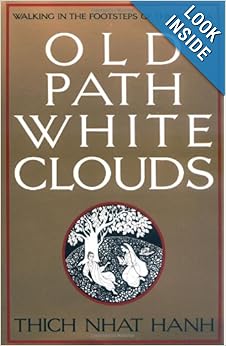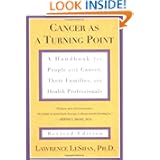On Labor Day, I drove down to the University of California at Santa Barbara with Nancy Aberle, Gail Teehan’s friend from the Feldenkrais for a six day retreat with Thich Nhat Hanh. We made the trip in about six and one-half hours, and enjoyed getting to know one another. I imagine that she is a wonderful Feldenkrais teacher.
I was truly amazed at the turn out for the retreat, and how well organized it was for so many people. I was placed in a dorm with an 85 year old gentleman, J. G. from Laguna Beach. He was truly marvelous the whole six days. It was wonderful to see a wealthy old Jew be so taken by Thay (a nickname for Thich Nhat Hanh).
Our meals were taken in silence in large tents set up by the dorm. The food was strict vegetarian for the entire six days, and it was remarkably good. I think I might have even gained three or four pounds!
The days began with walking meditation with Thay to and along the beach that runs at the edge of the campus. With each step, there is one inhalation and one exhalation. Naturally, I used “healthy…, free…” the whole time. After about thirty minutes of walking, Thay would sit on a dune practicing sitting meditation for about twenty minutes, and we would all join him. Then we would walk back to the central part of the retreat in the same manner as we walked to the beach. On Wednesday, Thursday, and Friday, I walked and sat with three feet of Thay during the period of walking meditation.
After breakfast, there was always a dharma talk – a talk about the teaching of Buddha and the practical application of them in a life of engaged Buddhism. I was familiar with about ninety per cent of what he spoke about, but the look on his face, the excitement in his voice, and the presence of his being are well worth the time spent.
Following Thay’s talk, one of the monks or nuns led us in mindful movements, which I later learned are related to qi gong. I was especially interested in them because of my workshop plans with Gail Teehan on “Mindfulness and ART in Healing.”
The schedule called for sitting meditation after the dharma talk, but it usually changed because of an extra long talk or other events. When I sat, I noticed that I was not obsessing about next week’s diagnostic tests – a biopsy of a mass in my thigh, and a cystoscopy. I found myself able to maintain a degree of mindfulness that kept me pretty much in tune with the present moment.
The afternoons were filled with special interest groups, dharma discussions, and supposedly a period of sitting meditation. I attended a special interest group on death and dying led by Joan Halifax, Ph. D. Joan is an ordained Zen teacher in the line of Thich Nhat Hanh, Seung Sahn, and Bernie Glassman Roshi. She is the founder of Upaya and resides in Santa Fe, New Mexico. The first time we met, she spoke about being with the dying person without trying to fix them. If they were open to teachings about mindfulness, we should speak with them, otherwise, we should just be there with our mindfulness engaged in “loving speech and deep listening.” The next morning, I had a private interview with Joan. I wanted to discuss my practice as it related to healing the cancer that was in my body. I could tell that she was deeply moved by my story, and she had me tell it again to a small group of her special interest group in the afternoon.
Following the special interest groups, there were dharma discussions. The first day, we had a tea ceremony, which was lovely. The other days, we spoke about Thay’s dharma talk, the “Five Mindfulness Trainings“, and other topics which people brought up. I found myself speaking a lot and sharing my story with this group also. We seemed to get very close in a matter of hours. I expect to continue my friendship with several of the people I met in my dharma discussion group.
The schedule called for sitting meditation after the dharma discussion groups. One afternoon, the thirty-four monks and nuns that were traveling with Thay from Plum Village were invited to demonstrate some of the chanting they do in their practice. The chanting was so wonderful. It seemed as if they all had wonderful voices. Thay, himself, introduced us to many of the monks and nuns.
On that same afternoon, Nancy came to visit me. After the chanting, we took a walk on the beach and I talked her into staying for dinner. She did not stay for the evening program.
The evening programs were varied and wonderful. Monday night, Thay gave an introductory dharma talk. Tuesday night, Sister Chan Khong offered “Five Earth Touchings”. The five earth touchings consisted of acknowledging our physical ancestry, and our spiritual ancestry, along with honoring the ancestors who made freedom possible in our corner of the world. The final two touchings were to people we love the most and people we love the least. I was moved to tears by most of this experience.
I spoke with Sister Chan Khong the next day before lunch about the “Five Earth Touchings”. I also told her about my illness and how I used mindfulness as a healing tool. She shared with me two stories about people who also used mindfulness with their illnesses. I then told her about “healthy cells grow all by themselves,” and she said, “With your wisdom and Thay’s teachings, you are going to be fine.”
On Wednesday evening, there was a presentation of the Five Mindfulness Trainings offered by several people in the Order of Interbeing. I found this quite helpful, as I planed to take them along with the three refuges of the Buddha, the Dharma (teachings), and the Sangha (group of people in the practice of the dharma). In other Buddhist traditions, the Five Mindfulness Trainings are known as the Five Precepts for lay people practicing Buddhist meditation. I am going to try to get permission to put the text of Thay’s Five Mindfulness Trainings on this site, but for now, I’ll simply summarize the intent of each one.
- Respect for life – non-killing
- Respect for property – non-stealing
- Avoidance of sexual misconduct
- Respect for others – loving speech and deep listening – telling the truth
- Avoidance of intoxicants – drugs, alcohol, certain TV programs, etc.
I have been practicing most of these precepts already, and the formal presentation was quite interesting. I took all five mindfulness trainings on Saturday morning when they were offered by Thay.
On Thursday evening, Sister Chan Khong presented the “Three Prostrations”. These involved our relationship to time, space, and the whole stream of life. Once again, I was deeply moved.
The last night consisted of questions from the sangha and answers from Thay. He responded spontaneously to many wonderful questions.
The whole retreat reminded me of Thay’s description of the life of the Buddha in Old Path White Clouds. The walking meditations suggested Buddha’s travels in what is now India and Nepal. He walked everywhere with a sangha of about 1500 bhikkhus and lay people. The silent meals reminded me of how the bhikkhus would beg for food in the villages and towns and return to the forest to eat their meals together.








